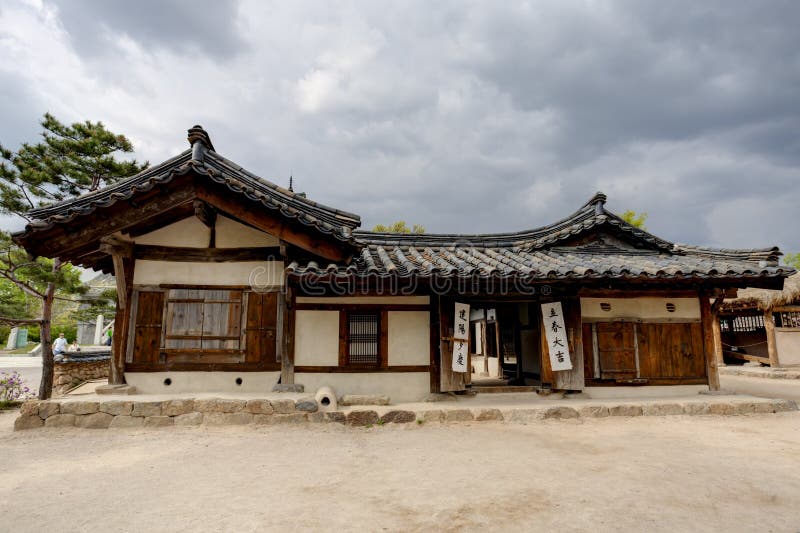Table Of Content
- How to Spend Three Days in Washington, DC
- The Vault House by OBBA incorporates hidden gardens behind curving brick walls
- Japan’s Unlikeliest Cheerleader Is an American Ambassador
- Materials
- Beautiful Home with Wood and Brick
- Open-air top flood house designs
- Endless Summer: 7 Luminous Courtyards From Down Under

Within the moody walls of the stylish, new remodeled dining room, there’s always something new and interesting to try. “City officials acknowledge that not all preservation efforts have worked. "We're trying to preserve the hanoks," said Han Hyo-dong, director of the city's Hanok Culture Division. "But we have no legal power. We cannot stop [the destruction]. We're trying to pass laws to enforce our protection efforts." That's not enough for Kilburn, who in 2005 launched a website to chronicle demolitions in the protection zone. The artistic way areas are compartmentalised allow for privacy and individual indoor design. The use of eggshell paint makes the overall atmosphere bright, while the more minimal use of wood and brick projects an inviting atmosphere.

How to Spend Three Days in Washington, DC
Our values include providing an opportunity to learn about Korean culture and serving great Korean traditional foods. The Koreahouse restaurant is the first Korean restaurant in the state of Florida, providing traditional and authentic Korean cuisine near Orlando since 1982. For an artful, unexpected riff on Korean cooking, look no further than Yangban. Unlike other places on this list, Yangban Society takes the dyed-in-the-wool definition of the cuisine and shoves it, and that’s exactly why we love the place.
The Vault House by OBBA incorporates hidden gardens behind curving brick walls
The same attention to detail makes for delicious takes on Korean standards, including the sizzling platters of barbecue chicken and generously portioned fried mackerel. Sure, Surawon might lack the late-night hours of other soondubu specialists, but when the main attraction is this fresh and delicious, we wouldn’t head anywhere else during regular business hours. Although many city officials publicly welcome Kilburn's interest in the hanoks, many privately dismiss him as a pest. In 2006, while videotaping an illegal demolition, Kilburn says, he was assaulted by a construction architect who knocked him to the ground. He left South Korea for two years but returned in March, prepared to start his fight anew. "They thought my departure meant they'd gotten rid of me," he said with a smile.
Japan’s Unlikeliest Cheerleader Is an American Ambassador
From the use of natural materials to the integration of open spaces and courtyards, these modern Hanok-inspired homes offer a connection to nature and a sense of harmony that is often lacking in modern urban living. In addition to the use of natural materials and integration with nature, hanok houses also incorporate sustainable design principles. For example, the layout of the house is designed to maximize natural ventilation and daylighting. The strategic placement of windows and doors allows for cross ventilation, ensuring a constant flow of fresh air throughout the house. This not only improves indoor air quality but also reduces the need for mechanical ventilation systems.
Where to Find Jaw-Dropping Korean Food in Portland and Beyond - Eater Portland
Where to Find Jaw-Dropping Korean Food in Portland and Beyond.
Posted: Fri, 05 Apr 2024 07:00:00 GMT [source]
One of the most striking features of a hanok house is its use of natural materials. From the wooden frame to the clay walls, every element is carefully chosen to create a harmonious and sustainable living space. The use of wood not only adds warmth and character to the house but also allows for flexibility in design. The clay walls, on the other hand, provide excellent insulation, keeping the house cool in summer and warm in winter. In addition to their application in urban environments and the hospitality industry, Hanok houses have also found their place in contemporary residential architecture. Many homeowners are drawn to the simplicity and elegance of Hanok design, opting to incorporate elements of it into their own homes.
Beautiful Home with Wood and Brick
As a starting guide, we’ve rounded up the city’s very best Korean eateries, both inside and outside of Koreatown. While many do offer bulgogi and galbi now known and loved across the country, we’ve also included a great many other restaurants that specialize in other dishes equally worthy of recognition. Think seafood, bubbling cauldrons of tofu soup or kimchi stew, noodle dishes, dumplings and more. If you’ve only experienced the barbecue side of things, consider this a solid introduction to the rest of L.A.'s Korean cuisine.
The environment-friendly aspects of traditional Korean houses range from the structure's inner layout to the building materials which were used. Another unique feature of traditional houses is their special design for cooling the interior in summer and heating the interior in winter. From a distance, this bungalow looks like a typical house outside the city. Unlike the usual roof in tones of red, brown or even green, this single-floor white house is topped by a grey-ish blue hue that gives a monochromatic feel to the landscape on a clear day. An added detail is the canopy that connects the house to a smaller structure, possibly an outhouse or a work station.
The smaller windows in the observatory frame the mountains in the distance. Apartments on the first and second floors are occupied by two families, with a third family taking the whole third storey, while the topmost storeys of the house are merged to create a fourth apartment. Each level that is appropriate for the livelihood of each family is designed in an architectural style that is similar to that of three single-family homes stacked on top of each other. Chamfered concrete walls encircle this South Korean family house, creating a dramatic interplay of shadows in the process.
Endless Summer: 7 Luminous Courtyards From Down Under
Real estate research firm Green Street estimates about 150 enclosed malls have closed since 2008, leaving about 900 today. Over the last few decades, malls became the town center of many American communities. But the pandemic, over-building and a move by consumers toward discount and online shopping changed all that. As anchor department stores left malls, so did some name-brand chains like Ruby Tuesday, Chili’s, Applebee’s and others. The Bidens and their guests strolled quietly through the memorial, which features 7-foot stainless steel statues of soldiers standing in patches of juniper bushes and polished granite strips symbolizing the rice paddies of Korea. They made no public remarks, but Yoon spoke of the visit during the White House arrival ceremony the next day.
“In some cases they have gardens planted with lawns and carefully manicured trees, shrubs, and flowerbeds. Westerners would call these "Japanese" or "Chinese" gardens since they are more familiar with gardens in those countries, but in fact they contain the elements that are common to gardens throughout the region. Houses were positioned after considering the distance and direction in line with mountains and fields as well as the location of water. The direction and structure of the position of the house were decided by this principle. When considering these points, Hanok is a very practical residential form. Korean people keep minimalistic design and beauty in these houses and don’t put too many decorative attractions.
Generally speaking, the capital city of Seoul has the most costly housing prices in the nation. Even while each of the flats is equipped with all of the essential dwellings, certain common facilities, like the kitchen in the first-floor house, is intended to be used by the entire household. Light enters through the clear plastic and is screened by the metal mesh to create a pleasant atmosphere. As there is no boundary wall around this third floor, it receives plenty of air circulation and sunshine.
“All ancient ondol are one-sided, meaning the underfloor heating system was placed on just one side of the room. As the ondol of North Okjeo and Amaknak are more than 5,000 kilometers apart, Knecht and Song agree that the two systems seem to have been developed independently. Upper class families lived in tile-roof houses usually surrounded by a stone wall with a front gate. The "L"-shape or "⊏"-shape main structure included a main living room for women, a hall, a room facing the main living room and men's quarters. This house is suited for the hilly terrain and sometimes chilly weather of Korea.


No comments:
Post a Comment